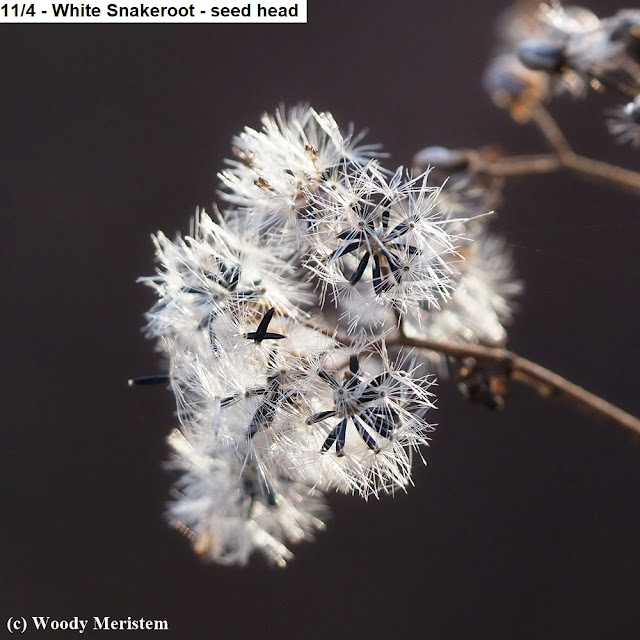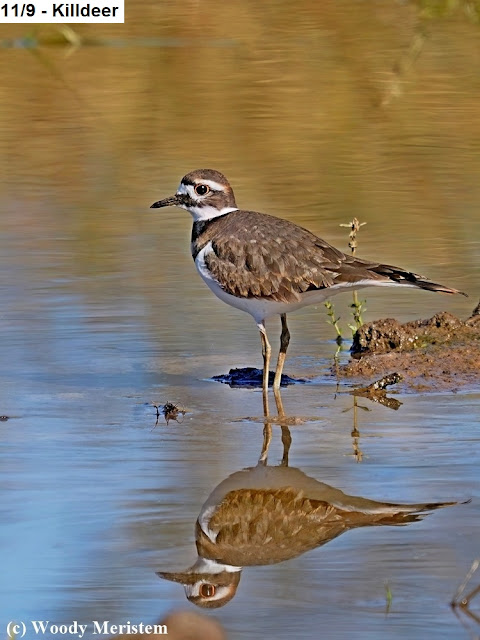A quaking aspen seedling
began growing in an abandoned pasture sometime during the Great
Depression of the 1930s. We can tell it had been a pasture from the barbed
wire protruding from some of the large old beech trees growing along
the property line and by the other trees in this woodland: white ash,
white birch, some other large old aspen and a few scraggly wild apple
trees, those species are pioneers on open ground. Now younger sugar and red maples and some beech are waiting for those old pioneers to die so they can take their places in the forest canopy.
The aspen was 80-90 years old when it died, about the maximum age for quaking aspen. It stood for several more years as fungi fed on its cells before the decay caused by the fungi weakened the dead tree and it snapped and fell where it's lain for a while.
Like most fallen logs, the old aspen has become a bit of a highway for wildlife. Critters use fallen logs for a number of reasons: logs provide an elevated walkway which gives them a better view of potential prey or predators; running on a log is quieter than running through dried leaves; there might be something to eat on the log, seeds, insects or a mouse.
Speaking of mice, a white-footed mouse (perhaps more than one) is the star of this video showing the wildlife that used the fallen aspen log over a period of six weeks –
Every time the mouse dashed down the log it put its life at risk because this woodland is home to short-tailed weasels, fishers, barred owls, red fox, eastern coyotes – and other species that would gladly have a mouse for dinner.
But then white footed mice have lots of offspring because mice are destined to become a meal for some predator.






-DeNoiseAI-low-light-DeNoiseAI-low-light.JPG)


-DeNoiseAI-low-light.jpg)

%20Z%20(400)-DeNoiseAI-standard-DeNoiseAI-low-light.JPG)
-DeNoiseAI-standard-DeNoiseAI-low-light.JPG)
%20Z%20(420)-DeNoiseAI-standard-DeNoiseAI-low-light.JPG)
%20Z%20(458)-DeNoiseAI-standard.JPG)
%20Z%20(527)-DeNoiseAI-standard-DeNoiseAI-low-light.JPG)
%20Z%20(669)-DeNoiseAI-standard-DeNoiseAI-low-light.JPG)
%20Z%20(658)-DeNoiseAI-standard.JPG)
%20Z%20(617)-DeNoiseAI-standard-DeNoiseAI-low-light.JPG)
%20Z%20(812)-DeNoiseAI-low-light.JPG)
%20Original%20site.jpg)
%20Laying%20out%20a%20dike%20-%20Sept%202000.jpg)
%20Grading%20upper%20dike%20(1).jpg)
%20Grading%20upper%20dike%20(2).jpg)
%20Upper%20dike%20organic%20layer%20placed.jpg)
%20Upper%20dike%20completed.jpg)
%20Upper%20dike%20-%20July%202006.jpg)
%20Geese%20on%20upper%20wetland.jpg)














.JPG)
.JPG)
.JPG)
.jpg)








.JPG)








.JPG)




.JPG)



















































.JPG)



%20Shells%20.JPG)










%20&%20Bonaparte's%20(4).JPG)

